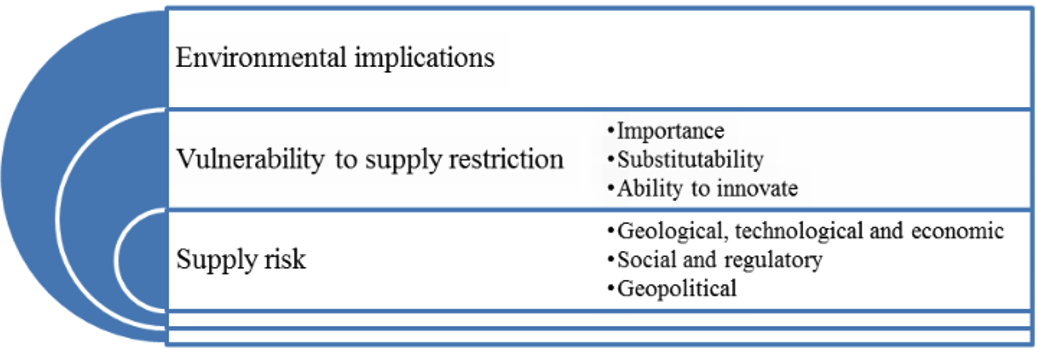3.7.4 Complementary material: Assessing CRM through the LCA framework
Course subject(s)
Module 3. Analysis
Assessing CRM through the LCA framework
Performing a Life Cycle Assessment to assess the environmental impacts of CRM has some challenges, as was discussed during the lecture. This document presents additional material that illustrates the nature of these challenges and what is being done to overcome them.
A. Quantifying CRM in LCA
Due to the significant variation in ways to apply an LCA assessment, the European Commission released in 2013 the International reference of Life Cycle Data (ILCD) series. In this document, it is suggested that resources should be assessed under the resource depletion impact category.
Although the assessment of resource scarcity is generally accepted under this category, it is challenging to compare the outcome given that the definition of the category is not standardized. Several frameworks have been proposed to assess resource depletion, as can be seen in figure 2. The different methods vary according to the resource being evaluated and the level at which it is studied.
The lack of a consensus in the way resources are included in an LCA is problematic when performing one. However, the ILCD provides a guideline on which method to use according to each of the categories depicted in figure 2.
Figure 2: Overview of methods of classification for resource depletion. Source. ILCD (2013)
For a full explanation on which method to choose according to each scenario, please refer to the ILCD (2013):
https://op.europa.eu/en/publication-detail/-/publication/78e153d6-2f1f-468d-9808-7e42ef665899
B. Data inconsistencies
One of the other challenges when performing an LCA on CRM is the large variability of reporting systems. Different reporting systems are used worldwide. Thus, the various forecasts and assessments are based on different data for shared systems.
For a full explanation of the different reference systems currently used, please refer to Section 9 in the following document:
https://op.europa.eu/en/publication-detail/-/publication/bff1ada2-d01e-46fc-9e5e-dc4feda90996
C. Limitations: Lack of systemic approach
When performing an LCA, it is important to keep in mind the limitations of this method. An LCA is an efficient tool to identify possible environmental impacts throughout the entire life cycle. However, it fails to show how these impacts affect the different stakeholders or which actor along the supply chain has the most significant influence.
Although one alternative to solve this issue is to perform a social LCA, Vieira (2013) suggests involving criticality assessments (figure 3) in the general LCA framework. Applying criticality assessments would allow targeting specific actors along the supply chain that are at risk of not having a future supply.
Figure 3. Components covered by criticality assessments. Source. Graedel et al. (2012)

While integrating criticality assessments in the LCA framework is one alternative, it is not a unique approach. Several options can be developed to engage stakeholders along the supply chain actively. The critical factor in this topic is understanding that when an LCA is applied to assess a resource, it fails to capture the supply risk involved for the different actors.
For a full explanation of the different reference systems currently used, please refer to Section 15 in the following document:
https://op.europa.eu/en/publication-detail/-/publication/bff1ada2-d01e-46fc-9e5e-dc4feda90996

Raw Materials: Managing Resources for a Sustainable Future by TU Delft OpenCourseWare is licensed under a Creative Commons Attribution-NonCommercial-ShareAlike 4.0 International License.
Based on a work at https://online-learning.tudelft.nl/courses/critical-raw-materials-managing-resources-for-a-sustainable-future/ /



